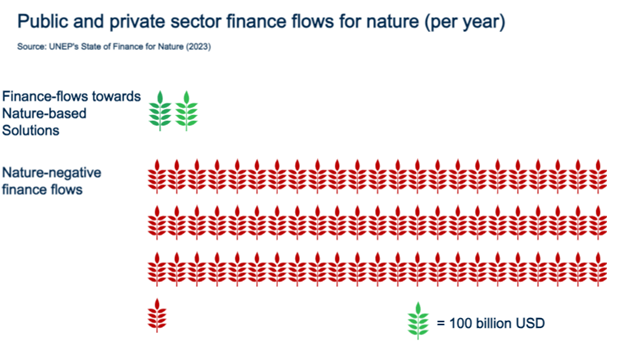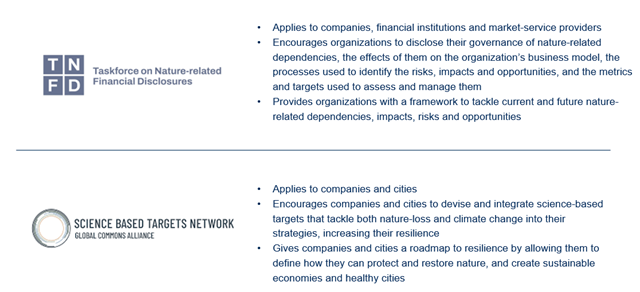


Over half of the world’s GDP (US$44 trillion) is moderately or highly dependent on nature.
However, at present, current finance flows towards nature-based solutions (NbS) stand at just US$200 billion per year– only a third of what is needed to reach global climate, land and biodiversity targets by 2030. In addition, nature-negative finance flows— which cause harm to species and ecosystems around the globe— are estimated by the UNEP to be almost US$7 trillion per year. If this capital was realigned into furthering the objectives of the Paris Agreement, it could be instrumental in combatting the climate crisis. Safeguarding nature could overall save at least $100bn in costs of climate change annually. It is imperative that nature is seen as an ally to private investors as well as an absolute necessity to protect the planet.

A recent report from Systemiq reveals that nature is still largely seen as ‘uninvestable’ due to the complexities that come with deploying capital in this sector. The uncertainty over investment returns and a lack of a unified approach for measuring and evaluating nature create additional challenges. Fortunately, various political statements made at COP28 in Dubai suggest that the tide may be beginning to turn and the urgency of investing in nature better recognized. For example, the conference featured promising announcements made on climate, nature and people recognizing the synergy of climate and nature in combatting the climate crisis and the need to tackle them in an integrated way for powerful mitigation benefits. However, well intentioned political statements alone are not enough to unlock the flow of finance for nature. Ultimately, investors need the right tools to understand the complexities of investing in nature – tools for assessing the existing nature and climate impacts of their portfolios, and tools for comparing the climate and nature commitments of potential investees.
New frameworks could help to combat nature’s ‘uninvestible’ stigma, as well as encourage more organizations to consider nature at the heart of business decisions. For example, the Taskforce on Nature-related Financial Disclosures’ (TNFD) recent recommendations recognize the importance of integrating nature-related risks into organizations’ risk management strategies. TNFD has published guidance for the disclosure of nature-related dependencies, impacts, risks and opportunities. Facilitating a greater comparability across different sectors is imperative for investors to gain a better understanding of climate impacts overall, and will ultimately enable investors to make better-informed decisions in constructing climate-positive portfolios. TNFD also encourage additional, specific guidance to sectors commonly associated with high-nature related dependencies – opening the door for greater transparency within sectors that are more exposed to nature-related risks. Another initiative, the Science-based Targets Network (SBTN), develops guidance for setting corporate emissions reductions targets aligned with the best available science, including emissions pathways, land-use and biodiversity indicators. The network builds on the most-widely used target-setting standards and frameworks for impact assessment and reporting, and seeks to align targets with key global initiatives such as the Global Biodiversity Framework and the Paris Agreement. Setting targets following SBTN’s guidance can support companies to meet TNFD’s disclosure framework.
Both initiatives seek to fill the information gap when understanding nature-related risks and opportunities in investable businesses. Shared definitions and methodologies for measuring progress toward climate targets may help to reduce some of the risk and thus can accelerate capital flow, breaking nature’s uninvestable stigma. This transparency allows for proper risk mitigation and more security for investors deploying capital into businesses and funds. Initiatives such as TNFD and SBTN can help investors to understand companies’ internal governance processes, controls, and procedures for managing nature-related issues, and to encourage help investors of all stripes to make more informed decisions when allocating capital towards climate and nature goals.

Although 320 organizations have committed to start making disclosures based on the TNFD recommendations as part of their corporate reporting, and over 4000 companies have set SBT's verified by SBTi, these voluntary initiatives have still not been adopted at scale. The further mainstreaming of these initiatives are an important part of the puzzle for rendering nature intelligible – and investible – and scaling up finance for nature.